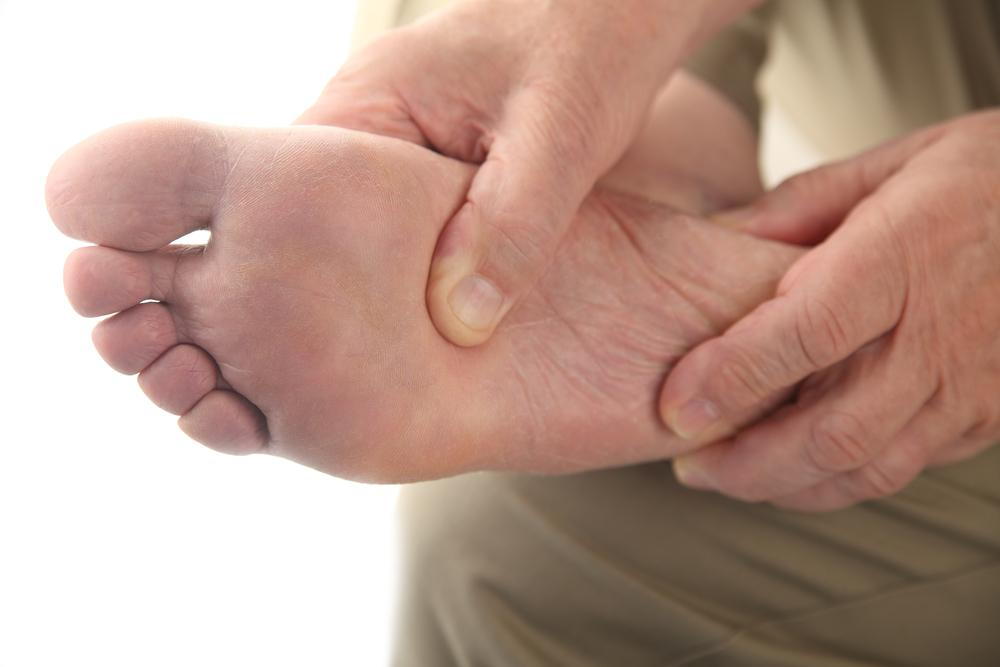Diabetes is a chronic condition that affects millions worldwide, and one of its most overlooked complications is foot health. If you or a loved one has diabetes, practicing daily foot care is essential to prevent severe complications like infections, ulcers, or even amputations.
According to experts, nearly 50% of individuals with diabetes suffer from nerve damage (diabetic neuropathy) due to elevated blood sugar levels. This primarily impacts the legs and feet, reducing sensation and increasing the risk of unnoticed injuries.
In this guide, we’ll explore the importance of daily foot checks, preventive care tips, and expert insights to help keep your feet healthy while managing diabetes effectively.

The Connection Between Diabetes and Foot Health
How Does Diabetes Affect the Feet?
Diabetes leads to high blood sugar levels, which can cause severe damage to blood vessels and nerves, especially in the lower extremities. Here are the three primary ways diabetes affects foot health:
- Nerve Damage (Diabetic Neuropathy): This reduces sensation in the feet, making it difficult to feel pain, heat, or injuries.
- Poor Blood Circulation: Diabetes can narrow the blood vessels, restricting blood flow and delaying the healing of wounds.
- Weakened Immune System: This increases the risk of infections, making even minor cuts or blisters dangerous.
Without proper care, these complications can lead to diabetic foot ulcers, infections, or in severe cases, amputations.
Essential Foot Care Tips for Diabetics
1. Perform Daily Foot Inspections
Checking your feet every day is one of the simplest yet most effective ways to prevent serious complications. Here’s how you can do it:
- Examine the top, bottom, and sides of your feet.
- Use a mirror if you have difficulty seeing the soles.
- Look for cuts, blisters, swelling, redness, or unusual marks.
- Check for changes in skin color or temperature (hot or cold spots).
- If you notice wounds that don’t heal within a week, seek medical attention immediately.
2. Wash and Moisturize Your Feet Properly
- Wash your feet daily with warm water and mild soap.
- Avoid soaking your feet for too long, as this can cause dryness and cracks.
- Dry thoroughly, especially between the toes, to prevent fungal infections.
- Apply a moisturizer to keep your skin soft, but avoid putting lotion between your toes.
3. Choose the Right Footwear
Wearing properly fitted shoes can significantly reduce the risk of foot injuries. Follow these tips:
- Avoid walking barefoot to prevent accidental injuries.
- Choose comfortable, well-cushioned shoes that provide support.
- Wear diabetic-friendly socks that help with moisture control.
- Ensure shoes fit properly and do not cause friction or blisters.
4. Trim Nails Carefully
- Trim nails straight across and avoid cutting too close to the skin.
- Never cut corns or calluses yourself—seek professional help from a podiatrist.
- Use an emery board to smooth rough edges and prevent ingrown nails.
5. Schedule Regular Podiatrist Visits
A yearly foot exam by a specialist can help detect early signs of complications. Your podiatrist will:
- Check for nerve damage, circulation issues, and infections.
- Provide custom foot care advice tailored to your needs.
- Recommend special footwear or treatments if necessary.
6. Manage Your Blood Sugar Levels
Keeping your blood sugar in a healthy range is crucial for preventing foot problems. Follow these guidelines:
- Monitor your blood glucose levels regularly.
- Maintain a healthy diet rich in fiber, lean protein, and whole grains.
- Engage in regular exercise to promote circulation.
- Take medications as prescribed by your doctor.
Warning Signs: When to See a Doctor
If you notice any of the following signs, consult a healthcare provider immediately:
- Sores or wounds that don’t heal within a week.
- Redness, swelling, or warmth around an injury.
- Pain, numbness, or tingling in the feet.
- Blackened skin or foul-smelling discharge (possible infection).
- Changes in foot shape or structure.
Early detection and treatment can prevent minor issues from developing into serious complications.
Final Thoughts: Take Charge of Your Foot Health
Taking a proactive approach to foot care is essential for those living with diabetes. By implementing daily inspections, proper hygiene, and medical check-ups, you can significantly reduce the risk of severe foot complications.
Remember, small preventive steps today can save you from major health concerns in the future. If you have any concerns, consult a podiatrist immediately for professional guidance.
FAQs:
1. Why are daily foot checks important for diabetics?
Daily foot checks help detect cuts, sores, or infections early, preventing severe complications like ulcers or amputations.
2. What are the first signs of diabetic foot problems?
Early signs include numbness, tingling, redness, swelling, and slow-healing wounds.
3. How often should diabetics visit a podiatrist?
It’s recommended to see a podiatrist at least once a year for a thorough foot examination.
4. What type of shoes should diabetics wear?
Diabetics should wear well-cushioned, properly fitted shoes that provide support and prevent friction.
5. Can diabetic foot problems be reversed?
While some damage may be permanent, early intervention, proper foot care, and blood sugar control can help prevent further complications.




